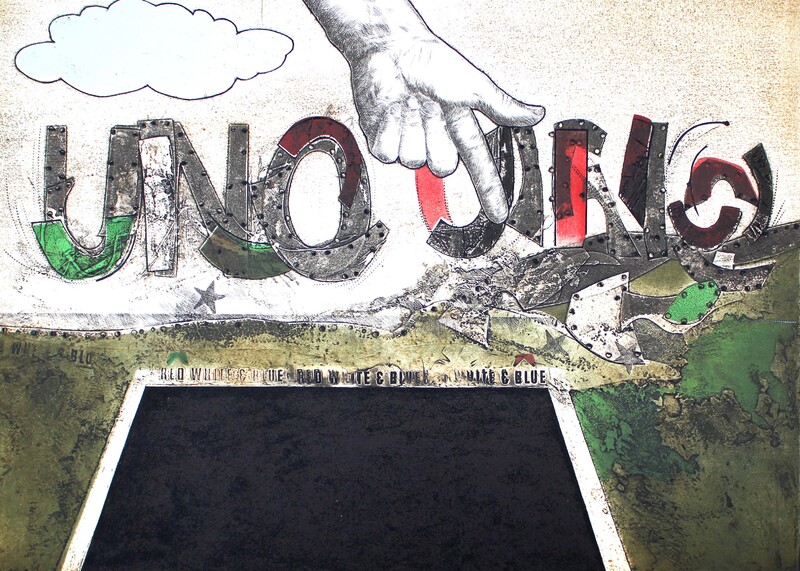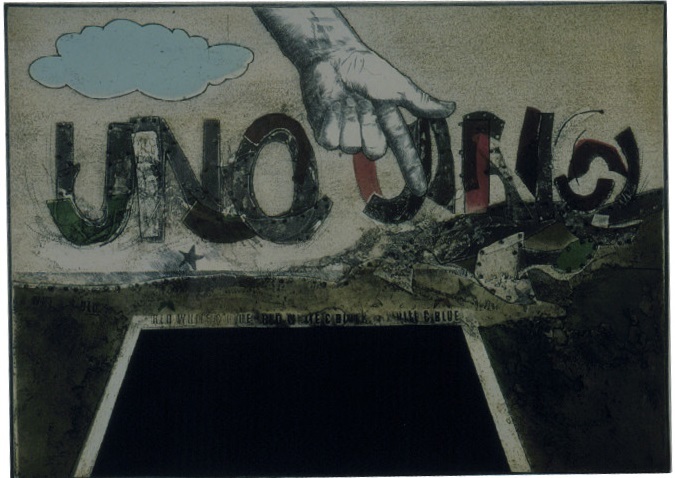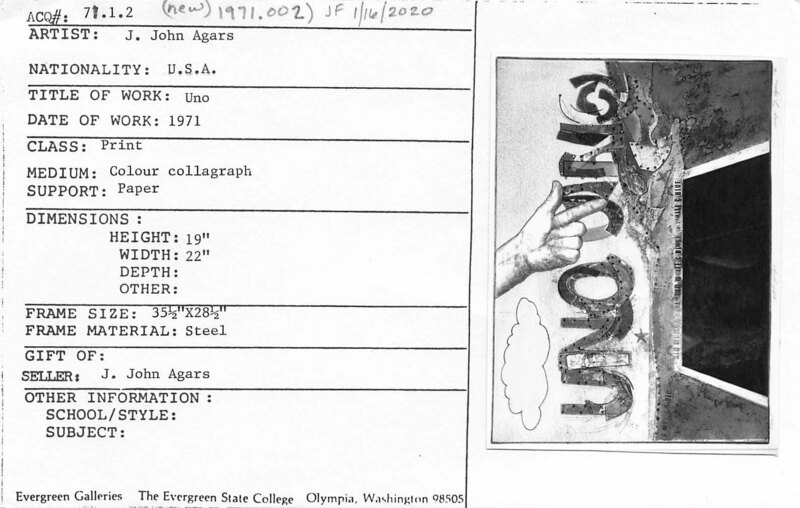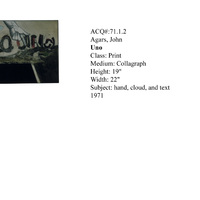-
Title
-
Uno!
-
Creator
-
John J. Agars
-
Artist ID
-
71
-
Date of Work
-
1971
-
Description
-
The words "UNO UNO" on a landscape, green hills and asphalt. Giant hand coming out of the sky and poking the right "UNO" with a finger. Blue cloud on the left.
-
Category of Media
-
Print
-
Media
-
collagraph
-
Accession Number
-
1971.002
-
Location
-
0449a - FF3
-
Date Acquired
-
1971
-
Acquisition Method
-
Purchase
-
Dimensions of Work
-
19.5" x 26.75"
-
Frame Dimensions
-
35.5" x 28.5"
-
Frame Type
-
Steel
-
Condition Statement
-
1/2023: Good condition. Needs a frame.
-
Artist Bio
-
John Agars, also known as J.A., was a long-time member of the Art Department at Central. He was primarily a professor of printmaking and art appreciation. John was born on November 16th (or 17th, according to his mother) in Riga, Latvia. In 1949, he immigrated to the United States with his family and settled in Kent, Washington. He attended the Kent public schools and graduated in 1956. John became an American citizen in 1957.
He pursued higher education at the University of Washington, where he obtained a Bachelor of Arts degree in Fine Art. Following that, he attended Washington State University (WSU) and earned his Master of Fine Arts (MFA) degree in printmaking. After completing his studies at WSU, John worked briefly in Seattle before accepting a curator position at the State Capitol Museum in Olympia in the mid-1960s.
In early 1964, John learned about a job opening at Central from Reino Randall, who was going on leave. He contacted Louis Kollmeyer, the head of the Art Department, and was hired as a one-year replacement for Randall. However, he ended up teaching at Central for 37 years and graduated from the institution in 2000.
Throughout his tenure at Central, John witnessed several changes in the Art Department's leadership. He served under various chairmen, including Frank Bach, Louis Kollmeyer, George Stillman, Jaba the Hun (an unofficial nickname), Connie Speth, Michael Chinn, and William Folkestad.
Regarding the department's financial support for equipment and materials, John noted that funding became scarcer over the years as the state's priorities shifted. He believed that education should be primarily supported by the state, rather than burdening students with the cost.
Source: https://digitalcommons.cwu.edu/cwura_interviews/1/







